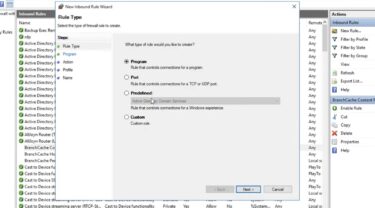In today’s digital age, online communities have become an integral part of our lives. From social media platforms to forums and discussion boards, we engage with various online communities on a daily basis. But have you ever wondered how trust is established and maintained within these virtual spaces? This article explores the concept of “Trust Levels” and their significance in online communities.
What Are Trust Levels?
Trust Levels, often abbreviated as TL, refer to a system or hierarchy within online communities that determines the privileges and responsibilities of users based on their level of trustworthiness and engagement. This concept is commonly found on forums and discussion platforms, such as Reddit, Discourse, and many others.
The Trust Level Hierarchy
- New Users (Trust Level 0): Newcomers to the community start at this level. They typically have limited privileges, such as posting restrictions and the inability to send private messages. These restrictions are in place to prevent spam and maintain the community’s quality;
- Basic Users (Trust Level 1): Users reach this level after spending some time on the platform and participating in discussions. Basic Users gain additional privileges, like the ability to post links and send private messages;
- Member Users (Trust Level 2): As users become more engaged and trusted by the community, they can attain Member status. This level often grants further privileges, such as editing wiki posts or participating in community moderation;
- Regular Users (Trust Level 3): Regular Users are highly trusted members who have demonstrated consistent positive engagement. They may have the power to close and reopen topics, flag posts, and help moderate the community;
- Leaders (Trust Level 4): The highest trust level is typically reserved for community leaders and moderators. Leaders have extensive privileges, including the ability to edit categories, manage users, and enforce community guidelines.
How Trust Levels Are Earned
Earning trust levels is not an automatic process. Users must actively participate and contribute positively to the community to progress through the trust level hierarchy. Here are some common criteria for earning trust:
- Reading Time: Users often need to spend a certain amount of time reading posts and topics to progress;
- Likes Received: Receiving likes and positive feedback on your contributions can boost your trust level;
- Posting Quality: High-quality, relevant posts and contributions are key to earning trust;
- Flagging and Reporting: Responsible reporting of inappropriate content can also contribute to trust level advancement.
The Importance of Trust Levels
Trust Levels play a crucial role in online communities for several reasons:
- Community Integrity: They help maintain the quality and integrity of the community by ensuring that users are engaged and trustworthy;
- Moderation Assistance: Higher trust levels can assist moderators in managing the community effectively;
- Incentivizing Participation: Trust levels incentivize active and positive participation, fostering a healthy community environment;
- Preventing Spam: Initial restrictions on new users prevent spam and low-quality content.
Trust Levels are a fundamental aspect of online communities, promoting engagement, trustworthiness, and community quality. As users progress through these levels, they become more integral to the community’s success. Understanding and appreciating the role of Trust Levels is essential for anyone looking to be a valuable member of an online community.
Trust Levels as Community-Building Tools
In the ever-evolving digital landscape, online communities have evolved into dynamic ecosystems of diverse voices and opinions. To navigate this complexity effectively, community administrators and members rely on a system known as Trust Levels. This article delves deeper into the significance of Trust Levels as powerful community-building tools.
Fostering Engagement and Contribution
At the core of Trust Levels lies the principle of rewarding active participation. Users who actively engage with the community by posting meaningful content, providing insightful comments, and interacting with fellow members are more likely to ascend through the Trust Level hierarchy. This system encourages members to invest their time and expertise, which in turn enriches the community experience. Let’s explore some key benefits of Trust Levels in greater detail:
1. Encouraging Quality Contributions
Trust Levels incentivize users to contribute high-quality content that adds value to the community. By granting additional privileges to members who reach higher levels, communities ensure that those who have demonstrated a commitment to the community’s well-being are equipped to take on more significant responsibilities. This can result in a richer and more informative content pool for all members.
2. Maintaining Community Health
Community administrators often rely on Trust Levels as a tool to maintain the health of the community. By setting requirements for reaching each Trust Level, they can ensure that members have invested enough time and effort to gain privileges that come with increased responsibility. This approach helps in reducing spam, misinformation, and inappropriate content, making the community a safer and more informative space.
3. Facilitating Self-Moderation
As users progress through Trust Levels, they may gain access to moderation tools and responsibilities. This self-moderation aspect is particularly valuable for larger communities where administrators and moderators may not be able to monitor every discussion closely. Empowering trusted members with the ability to flag inappropriate content or assist in dispute resolution can significantly contribute to community harmony.
4. Building Trust and Reputation
Trust Levels reflect a user’s standing within the community. As members ascend through the hierarchy, they build a reputation as reliable, knowledgeable, and trustworthy contributors. This reputation extends beyond the community and can be a valuable asset in online interactions and networking.
5. Inclusivity and Collaboration
Trust Levels are an inclusive way to recognize and appreciate contributors of varying skill levels and expertise. They acknowledge that not all members start at the same level of familiarity with the community’s norms and expectations. This inclusivity can lead to collaboration between experienced members and newcomers, fostering a sense of community and mentorship.
6. Recognizing Consistency
Consistency is a key factor in advancing through Trust Levels. It’s not about making a few high-impact contributions but rather about being an active and reliable member over time. This ensures that the Trust Level system rewards dedication and commitment rather than just occasional participation.
7. Enhancing User Experience
Trust Levels also play a crucial role in tailoring the user experience. Members at higher Trust Levels can access additional features and privileges that improve their overall experience. This personalization encourages members to strive for greater engagement and, in turn, enriches the community.
8. Encouraging Long-Term Commitment
Online communities thrive when they have a core of dedicated, long-term members. Trust Levels provide an incentive for users to stay engaged with the community over time. As they see their efforts rewarded with increased privileges and responsibilities, they are more likely to remain active contributors.
Strategies for Advancing Trust Levels
Now that we’ve explored the significance of Trust Levels let’s delve into some strategies that users can employ to advance through the hierarchy:
- Active Participation: Regularly engage with discussions, share insights, and contribute to the community’s growth. Show your commitment by consistently being a part of the conversation;
- Positive Interaction: Foster a positive and respectful atmosphere within the community. Constructive feedback and collaboration can help build trust and reputation;
- Reading and Learning: Spend time reading other members’ posts and familiarizing yourself with the community’s culture and guidelines. Understanding the community’s values is crucial;
- Flagging and Reporting: Be responsible in reporting inappropriate content or behavior. Community administrators value members who help maintain a safe and welcoming environment;
- Consistency: Aim for consistent, quality contributions rather than sporadic bursts of activity. Building a reputation takes time and dedication;
- Seek Feedback: Don’t hesitate to seek feedback from fellow members or community administrators. Their insights can help you improve and grow within the community.
To wrap up
In conclusion, Trust Levels are the backbone of many online communities, providing a structured framework for member engagement and recognition. They serve as powerful tools for fostering a vibrant, inclusive, and healthy community. By understanding their significance and actively participating in the community, users can not only advance through Trust Levels but also contribute to the growth and success of the online spaces they are a part of.










